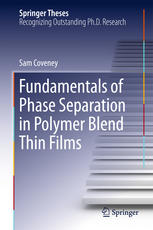

Most ebook files are in PDF format, so you can easily read them using various software such as Foxit Reader or directly on the Google Chrome browser.
Some ebook files are released by publishers in other formats such as .awz, .mobi, .epub, .fb2, etc. You may need to install specific software to read these formats on mobile/PC, such as Calibre.
Please read the tutorial at this link: https://ebookbell.com/faq
We offer FREE conversion to the popular formats you request; however, this may take some time. Therefore, right after payment, please email us, and we will try to provide the service as quickly as possible.
For some exceptional file formats or broken links (if any), please refrain from opening any disputes. Instead, email us first, and we will try to assist within a maximum of 6 hours.
EbookBell Team

5.0
40 reviewsThis work sheds new light on fundamental aspects of phase separation in polymer-blend thin films. A key feature underlying the theoretical models is the unification of one-dimensional thermodynamic phase equilibria with film evolution phenomena in two- and three dimensions. Initially, an established 'phase portrait' method, useful for visualising and calculating phase equilibria of polymer-blend films, is generalised to systems without convenient simplifying symmetries. Thermodynamic equilibria alone are then used to explain a film roughening mechanism in which laterally coexisting phases can have different depths in order to minimise free energy. The phase portraits are then utilised to demonstrate that simulations of lateral phase separation via a transient wetting layer, which conform very well with experiments, can be satisfactorily explained by 1D phase equilibria and a 'surface bifurcation' mechanism. Lastly, a novel 3D model of coupled phase separation and dewetting is developed, which demonstrates that surface roughening shadows phase separation in thin films.